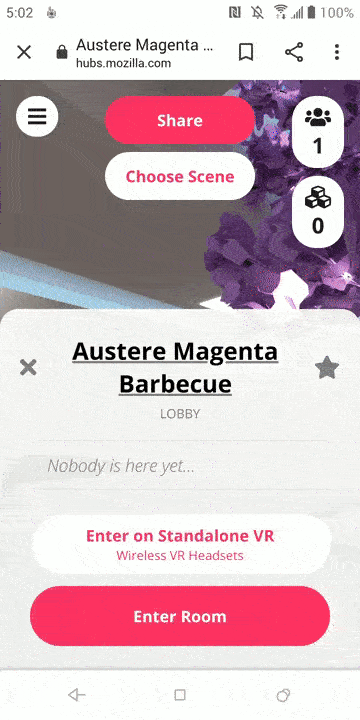Game3.js Newsletter #9
A Dive Into Sidechains, DeFi, $MEME, and Today's Open Source App: Mozilla Hubs
Welcome to Issue #9 of the Game3.js Newsletter!
We started Game3.js with a vision:
5 to 10 years from now, what will fully realized Web 3.0 games look like?
Today’s blockchain games are just the early iterations of Web 3.0 games. A fully realized Web 3.0 game will need to be more compelling than web, mobile, console, and VR games. Their virtual economies will need to have the same utility as those of sovereign fiat currencies. They will need to provide more meaning in people’s lives than just being a vehicle for intrusive ads and forced in-app purchases.
To achieve this vision, we need to bring in more builders, and make it as easy as possible for them to start building games in this new Web 3.0 world.
Game3.js aspires to be the game framework that will lead the way 🔥
Thank you for joining us in this quest!
A Dive Into Sidechains, DeFi and $MEME
In last week’s newsletter we mentioned that our next sprint is focused on mobile usability. Work continues this week, and hopefully by end of this sprint we’ll have better mobile device support for OP Arcade.
We have been researching how other projects have handled mobile interactions in Web 3.0, and have decided to integrate Web3Modal’s mobile login flow.

Aside from mobile UX, another usability issue that we need to address for OP Arcade is limiting gas costs for our users. We took a deep dive into a few awesome open-source projects that we knew were good references:
Nifty.ink - A fun NFT drawing tool using sidechains with great mobile UX
Snapshot - A gasless governance client
YAM protocol - An open-source DeFi experiment
Speaking of DeFi, last week we also saw NFT yield farming trending in crypto twitter due to $MEME (H/T to Vivek Singh for keeping us updated). As if we needed another reminder of how fast Web 3.0 moves!

NFT Yield farming and DeFi may be new concepts to our non-crypto-native developers, and we’ll be exploring them more in upcoming newsletters.
Game3.js users can already easily integrate NFTs by using 🕴 The CONTRACTOR, our NFT minting library built on our previous NFT + game engine integrations. The intersection of NFTs with DeFi and the possibilities they provide have energized the space though, and we’re likewise exploring integrating these more into game3.js in future sprints.
Today’s Open-Source App: Mozilla Hubs
This week we’ll highlight an open-source app instead of a game, and imagine how it can be improved by decentralization and Web 3.0.
In last week’s APOLLO 🚀 Gaming Guild Junto, one example brought up on innovative online economies was the VR platform AltspaceVR. While not fully open-source, Altspace has a great community of makers, and we’ll hopefully be learning more in juntos with some of them in the coming weeks.
Mozilla’s Hubs though, is fully open-source.

A VR platform similar to Altspace, Hubs allows anyone to set up their own private servers and build their own communities on VR. It’s also web-based (unlike Altspace VR which requires a native client), making it easier for people to use.
VR + NFTs is the killer app in most blockchain game narratives. NFTs allow virtual items to exist outside of a game universe, while VR creates a common interface layer for all of these game universes to coexist in. Bringing them together gives us the Ready Player One vision of VR, where players live more of their lives in cyberspace, and digital items have a whole ecosystem of makers and users around them.
It may seem like science fiction, but that vision is already here.
Tony Sheng said it perfectly:
The virtual worlds future is already here. It’s just not evenly distributed.
They may not look the same as what we’ve seen in the movies, but games with winners and losers are already being played in Web 3.0. Players already spend more of their lives in cyberspace, and NFTs already have a whole ecosystem of makers and users around them.
Currently, AltspaceVR and Mozilla Hubs exist outside of this Web 3.0 ecosystem.
In these VR platforms, anyone can create an avatar and share it infinitely. Mozilla Hubs can even pull digital items from 3D hosting services such as Google Poly and Sketchfab. Users can search for something like a “cheeseburger”, and these items appear magically in any room they want.
What will happen once we introduce the concept of currency into these platforms?
Thank you for reading! If you would like to contribute to game3.js or have any questions, please reach out via Github or Gitter.
We would also like to thank all our Gitcoin Grant supporters! Every contribution means the world to us 🌎 Please also share this newsletter to anyone who might benefit from it.
To keep receiving Game3.js updates, just click the Subscribe button below.
Cheers and see you next issue!
